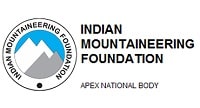Complete India Tour itinerary
Day 01: Arrive Delhi
Arrive Delhi by flight. Welcome to India- a country where hospitality is a way of life; to a culture steeped in tradition, a land where history lives in music and dance. You will be received at the airport in a traditional manner with garlands and proceed to your hotel.
Overnight stay at Delhi.
Day 02: Delhi
Morning after a relaxed breakfast we will take you to a tour of Delhi starting with a visit to the Old city. Old Delhi was the heart of Delhi, the home of the Emperor and center of all business and trade. It is a maze of narrow and tiny lanes; common for human jams because of the number of people that fill up the lanes. In Old Delhi you will see the famous Red Fort – closed on Mondays (visit from outside only) surrounded by shops and bazaars, the Jama Masjid with its tapering minarets and wonderful marble domes and Chandni Chowk. In Old Delhi you will also have an opportunity to experience a rickshaw ride .
Later we will also visit Raj Ghat - the memorial of Mahatma Gandhi and the National Gandhi Museum (Closed on Monday)
Later we will visit New Delhi, developed by the British and famous for its boulevards, mansions, and wide roads. Here we will visit the magnificent Parliament Building, the Rashtrapati Bhawan (the official residence of the President of India in the 330 acres of land and designed by Sir Edwin Lutyens) and India Gate. In New Delhi, you will also visit Humanyumb’s Tomb, which was built in the 16th century and architecturally considered the forerunner of the Taj Mahal.
Overnight stay at Delhi.
Day 03: Delhi – Agra By: Drive
After breakfast, then drive to Agra.
On arrival check in at the Hotel.
Later this afternoon you will visit the Taj Mahal (remain closed on Friday), is the jewel of Muslim art in India and one of the universally admired masterpieces of the world's heritage. Defined as "A Tear on the Face of Eternity", this white-splendored tomb was built by Emperor Shah Jahan in the memory of his favorite wife, Arjumand Banu Begum, better known as Mumtaz Mahal ("Chosen of the Palace"). The unique Mughal style architecture combines elements & styles of Persian, Central Asian, and Islamic architecture. Later you will visit to Agra Fort, situated on the bank of river Yamuna, the Agra Fort today, stands as a citadel of the past that has witnessed centuries slip by. Built in red stone, the Agra fort stretches almost two kilometers on the bank of the Yamuna. A huge wall that stands 69 ft in height encircles the crescent shaped fort.
Afternoon proceed to Agra Fort and for Tajganj Heritage Walk – Exploring the unexplored in the shadow of Taj During the walk, you will visit street full of home-based occupation: Garland making and flower market (Phool Mandi) and enjoy a Glimpses of traditional handicrafts: carpet, shoes, zardori. The walk ends with a view of Taj at Tomb of Diwan Ji Begum, before we return back to the temple.
Overnight stay at Agra.
Day 04: Agra – Khajuraho By: Train
After breakfast, take train to Jhansi and continue by car to Khajuraho via Orcha.
Orchha is a small town placed on the banks of River Betwa and accurately translates to "hidden place "and is a well-known traveler Destination. Orchha is residence to Bundella style of structural design and the palaces of Orchha bear observer to the magnificent work of medieval architects. The famous amongst this are Raj Mahal and Jahangir Mahal. The Rajmandir - built on a square base has plain external with projecting windows. The Jahangir Mahal built to welcome the Mughal emperor Jahangir is the magnificent example of Hindu structural design. The other attractions include the Raj Mahal, The Sheesh Mahal, the chaturbhuj temple. Along with these there are numerous Chhatris of royals or cenotaphs dotting the banks of the river Betwa.
Upon arrival in Khajuraho, you will transfer to hotel for check in.
Overnight stay at Khajuraho.
Day 05: Khajuraho – Varanasi By: Flight
Morning proceed for sightseeing of Khajuraho temples. Khajuraho combines history, architecture, culture and environment with delectable charm. The temples of Khajuraho are divided into the Western, Eastern, and Southern groups. The Western Group, situated opposite the Government of India Tourist Office, has 14 temples. The Eastern Group, 2.4 km from the Tourist Office, consists of seven temples (four Jain and three Hindu). The Southern Group, about 5 km from Khajuraho, contains the Chaturbhuj and Duladeo temples.
Then take flight to Varanasi. On arrival transfer to hotel. In evening we will head towards the Dasaswamedh Ghat (One of the banks of Ganges River close to Kashi Vishwanath Temple) to witness Ganga Aarti (Evening Prayer). Take a stroll through the Local Market which is very colorful during the evening with lights.
Overnight stay at Varanasi.
Day 06: Varanasi – Kolkata By: Flight
Early morning enjoys an inspiring and beautiful Sunrise boat ride along the river’s edge to view the temples and the ancient rituals of the thousands of pilgrims who worship here daily. After the boat ride come back to hotel for breakfast.
Today you will also have an opportunity to visit a local Indian wresting school, where you will learn about the art of Indian wrestling and also the discipline and lifestyle followed by the wrestlers. Afternoon take flight to Kolkata. Check in into the hotel.
Overnight stay at Kolkata.
Day 07: Kolkata
Morning after breakfast, then proceed for Kolkata sightseeing and visiting the Mother Teresa's House (remain closed on Monday) to view her tomb. It is this place where Mother Teresa lived with her sisters to serve people. Continue drive to visit the famous Howrah Bridge. It is the third longest bridge in the world and remains busy almost throughout the day. Built over the sacred Ganges, the river looks beautiful from the bridge. Now we move towards the oldest building of the British rule in the city, the St. John’s church. Near the church lies the grave of Job Charnock, who is the founder of the city. It is a stone and brick structure with beautiful interior; built of wood and marble. You can see the large paintings of the Last Supper on the walls. It is also significant as it contains the round table on which the Charter of Calcutta was signed. Later our trip ends with a visit to the majestic Victoria Memorial (Closed on Monday); a marble structure built in memory of Queen Victoria. It is a blend of Mughal and British architecture. At present it is a museum which exhibits paintings, miniatures, statues and books, through which people can get an in-depth knowledge of Indian history.
Overnight stay at Kolkata.
Day 08: Kolkata – Chennai - Mahabalipuram By: Flight
Early morning take flight to Chennai. Assistance upon arrival and you will transfer to Mahabalipuram (approx. 55kms / 2hrs drive).
On arrival in Mahabalipuram, you will transfer to hotel for check in.
Overnight stay at Mahabalipuram.
Day 09: Mahabalipuram
Morning after breakfast proceed for sightseeing of Mahabalipuram.
Mahabalipuram is a beautiful town famous for its South Indian temple architecture. During the rule of the Pallavas between the 7th and 10th centuries, this place was one of the most active sea ports of the country. Mahabalipuram is renowned for its rock-cut temples and caves, especially Arjunas Penance (closed on Fridays), Panch Rathas and the Krishna temple. The Five Rathas also known as Panch Rathas is a set of rock temples which is the most striking part of the city. These are exceptional examples of the development of Dravidian style architecture in the city. With plenty of striking white sandy beaches amidst the casuarinas trees that are found in abundance over here, the place is an ideal destination for tourists who come here to relax and explore the history and cultural heritage of the place. For shopaholics, Mahabalipuram offers numerous places to shop. There are many attention-grabbing places to visit in Mahabalipuram.
Shore Temple is one among the popular temples of the city which is located along the shoreline. Several pilgrims are found throughout the year in this spectacular temple which is an excellent example of the ancient temple architecture. There are many other places to visit in Mahabalipuram which depict its cultural heritage.
Evening at leisure.
Overnight stay at Mahabalipuram.
Day 10: Mahabalipuram – Kanchipuram - Pondicherry By: Drive
Morning after breakfast drive to Pondicherry. Enroute visit Silk workshop in Kanchipuram and Learn the Art of Silk making in Kanchipuram. Kanchipuram - One of the seven sacred cities of India, Kanchipuram is appropriately called the golden city of thousand temples, the place served as the capital of the Pallavas the powerful dynasty of south India.
Overnight stay at Pondicherry.
Day 11: Pondicherry
Morning proceed for sightseeing of Puducherry visiting Aurobindo Ashram, Auroville and Pondicherry museum.
The Aurobindo Ashram located on rue de la Marine, is one of the most well-known and wealthiest ashrams in India, with devotees from India and all over the world flocking to it for spiritual salvation. Its spiritual tenets represent a synthesis of yoga and modern science.
Auroville - or the ‘City of Dawn’ - was conceived as a place of research into the ideal of human unity by the Mother, the spiritual collaborator of Sri Aurobindo. The idea is to build a futuristic city where people of goodwill can live together in peace and progressive harmony, above all creeds, all politics and all nationalities. Auroville came into existence in 1968. Its Charter says, “To live in Auroville one must be a willing servitor of the Divine Consciousness” and describes it as “belonging to nobody in particular, but to humanity as a whole”; as a place “of constant progress”; and as “a bridge between the past and the future.” The Puducherry Museum (Closed on Monday’s) is located on Saint Louis street in the former Law Building. The museum has a collection of rare bronzes and stone sculptures from the Pallava and Chola dynasties and artifacts excavated from Arikamedu.
No visit to Puducherry is complete without a walk along beach road. Friday, Saturday and Sunday and holiday evening are busiest. The Police close both end of the road for vehicular traffic. Beach road has little of architectural interest, but oceans of simple charm and officially called Goubert Avenue. Overnight stay at Pondicherry.
Day 12: Pondicherry - Thanjavur By: Drive
Morning after breakfast drive to Thanjavur, enroute visiting Kumbakonam temple. Kumbakonam city is famous for various temples which are in this city. There are various places to visit in Kumbakonam. Mostly, this city hosts pilgrims from many parts of the country. There are 118 temples located in this city. Some of the famous temples which you can visit while in the city are Kumbeswara Temple, Ramaswamy Temple and Sarangapani Temple.
Upon arrival in Thanjavur, and proceed for sightseeing visiting Brihadeeswara temple, The Palace of Tanjore and Art Gallery.
Brihadeeswarar Temple is a magnificent temple, situated in the Thanjavur district of Tamil Nadu. It dates back to the 11th century and was founded by the Chola King Rajaraja Chola I. The temple is considered to be an architectural wonder and is the perfect example of the expertise of the erstwhile Chola rulers, who once ruled over the peninsular India. One of the tallest temples of the world, Brihadeeswarar Temple is designed in such a way that the vimana never ever casts a shadow on the ground at noon.
The Palace of Tanjore stands near the Brihadeswara temple. The Palace is a huge building that has been built through many decades. Nayaks initiated the foundation and primary work of construction around 1550 AD. The Marathas later completed the building during the reign of Peshwas.
The Art Gallery (Closed on Sunday) is situated in the Thanjavur Palace only. The place is a must visit in Tanjore as it houses some of the most magnificent and precious Granite and Bronze statues of the Chola period.
Overnight stay at Thanjavur.
Day 13: Thanjavur/Trichy/Madurai By: Drive
Morning after breakfast drive to Madurai via Trichy.
In Trichy visit The Rock Fort.
The Rock Fort Temple is the landmark to the city of Trichy. The fort is situated on the banks of river Kaveri. The Rock Fort is located on a massive rocky outcrop that suddenly spurts amidst flat land. The temple that is located 300 feet above the sea level is dedicated to Lord Shiva. The gigantic temple has a 100-pillar hall and a Vimana covered with gold. On the southern face of the rock, there are several beautifully carved rock-cut cave temples of the Pallava period.
Upon arrival in Madurai, transfer to hotel for check in.
Overnight stay at Madurai.
Day 14: Madurai/Periyar By: Drive
Morning proceed for sightseeing of Madurai Meenakshi.
Meenakshi Sundareswarar Temple or Meenakshi Amman Temple is the historic Hindu temple which is located in the city of Madurai in Tamil Nadu. This temple is among the most famous temples of India which is known throughout the world for its outstanding and impressive architectural beauty. In the Hindu religion temple is the place which is reserved for spiritual and religious activities that include prayers and analogous rites. Sri Meenakshi Amman temple of Madurai is dedicated to Lord Shiva and his consort Goddess Meenakshi (Parvati). Goddess Meenakshi is another form of the Goddess Parvati who is worshiped mainly by South Indians. The utmost architectural wonder of Meenakshi Amman temple is a testimony to the affluent Dravidian Culture.
Thirumalai Nayak Palace is a 17th century palace was built by King Thirumalai Nayak, one of the Madurai Nayak rulers in 1636 AD in the city of Madurai, India. This Palace was built with the help of an Italian Architect and is a classic fusion of Dravidian, Islamic and European styles. Tirumalai Nayak's Palace at Madurai was considered to be one of the wonders of the South. Thirumalai Palace was declared as a national monument and is now under the protection of the Tamil Nadu Archaeological Department.
Afternoon we will take drive to Periyar. On arrival in Periyar, you will transfer to hotel for check in. Then visit through one of the spice plantations, a highly educational and enjoyable experience seeing how crops such as pepper and nutmeg are grown and harvested. As you take a walk along the streets of Kumily or the winding pathways among the plantations, the thing that strikes you first is the lingering aroma in the air. The scent may be of cloves, nutmeg, pepper, cinnamon or cardamom and sometimes a fragrance that combines the scents of two or more spices.
Overnight stay at Periyar.
Day 15: Periyar
Morning you will proceed to enjoy boat ride on Lake Periyar. Thekkady is famous for the wildlife sanctuary located here. There is boating facility at Thekkady where the boat will take you around the Wildlife Sanctuary through the Periyar Lake. One can see wild animals during this boat ride but need to be very quiet
Later we will proceed to enjoy nature walk through forest.
Overnight stay at Periyar.
Day 16: Periyar/Alleppey By: Drive
Morning after breakfast drive to Alleppey and embark on the houseboat.
Cruising Kerala’s backwaters in a traditional ‘Kettuvallom’ (boats made by tying together wooden planks with coconut ropes) is a distinctly unique experience!
These traditional wooden craft, originally used to transport rice along Kerala’s lush green backwaters, have found a new lease of life quietly exploring timeless scenes of palms and paddies, temples and villages. Boats have either one or two fan-cooled bedrooms with attached shower rooms. The sides are open allowing the breeze to flow freely. Your private crew steer the boat, cook lavish local meals and keep you in tea and cold drinks.
As you drift along the backwaters, you can see the local villagers fishing and washing clothes in the canals, as small boys swim alongside the boats shouting ‘Hello’ and ‘Which country?’. Birdlife is plentiful: stork and egret are often spotted. Even a day on a rice boat is a unique and unforgettable experience, but staying overnight, on a boat gives the chance to experience dusk and dawn on the still, reflective waters.
Overnight at Houseboat
Day 17: Alleppey/Cochin By: Drive
Morning after breakfast disembark at the houseboat and you will drive to Cochin enroute visiting Kumbhalgani Fisherman Village.
Kumbhalgani is a lush green village of Cochin. It is declared as the first model fisheries and tourism village of India which has its own tradition and culture. Most of the villagers are engaged in agriculture and fishing. The village is 16 Sq. Km in area and surrounded by backwaters and paddy fields. On arrival in Cochin, you will transfer to hotel for check in.
Evening you will proceed to local restaurant where you will learn how to make Indian delicious. Overnight stay at Cochin.
Day 18: Cochin
Morning proceed for sightseeing of Cochin.
Known as the ‘Queen of the Arabian Sea’, Kochi, formerly called Cochin, is a city founded on trade and its streets still harbour a rich mix of cultural influences and styles. A morning sightseeing tour today takes in Fort Cochin, the oldest European settlement in India, as well as the Church of St. Francis, where Vasco de Gama was buried for a short while. In the Portuguese built Mattancherry Palace (closed on Friday) you will find some of the finest murals in India and returning to the hotel via the cantilevered Chinese Fishing Nets. Chinese Fishing Nets - The huge Chinese fishing nets that cantilever over the shallows are the indelible image of Cochin.
Afternoon enjoy Kathakali dance – the stylised and theatrical art form retelling stories from Hindu legend.
Kathakali, as a dance form popular today, is of comparatively recent origin. However, it is an art which has evolved from many social and religious theatrical forms which existed in the southern region in ancient times.
Overnight stay at Cochin.
Day 19: Cochin/Goa By: Train
Today early morning you will enjoy cycling through Fort Cochin & Old City Mattencherry. Later by evening board overnight train to Goa.
Overnight on-board train.
Day 20: Goa
Assistance upon arrival in Goa railway station and transfer to hotel. Welcome to Goa! Join the traditional welcome, which is a part of rich Portuguese heritage of Goa. Relax and enjoy the day at beach resort. Dine under the starlit sky and savor the bar - be - cue lobster, jumbo prawn & local sea food delicacies on the beach. While local musicians capture the moment on guitar strings.
Overnight stay at Goa.
Day 20: Goa
Post breakfast proceed for sightseeing of South Goa - The South Goa Tour Covers Miramar, Dona Paula, the World Heritage Churches at Old Goa, Mangueshi and Shantadurga temples as well as the Colva Beach. We also visit “Basilica pf Born Jesus”, The sacred relics of the patron saint of Goa St. Francis Xavier are kept here. The basilica is one the world heritage monuments and of the seven heritage monuments in Goa. Later continue driver to visit North Goa Beaches - proceed for the sightseeing of Anjuna Beach, Vagator Beach, Calangute Beach and Fort Aguada. Overnight at the hotel.
Overnight stay at Goa.
Day 21: Goa
Free day at relaxing or chilling beach area by own.
Overnight stay at Goa.
Day 22: Goa/Mumbai By: Flight
Today transfer to Goa airport to catch flight to Mumbai. On arrival in Mumbai you will transfer to hotel for check in.
Overnight stay at Mumbai.
Day 23: Mumbai
After a relaxed morning, proceed for a guided tour of Elephanta Island caves (a UNESCO world Heritage Site) by an hour - long ferry ride from the Legendry Gate ay of India.
Morning after breakfast at hotel proceed for excursion to Elephanta Caves The Elephanta Caves (Remains Closed on Every Monday) are a network of sculpted caves located on Elephant Island, or Gharapuri (literal-ly "the city of caves") in Mumbai Harbour, to the east of the city of Mumbai in the Indian state of Maharashtra. The island, located on an arm of the Arabian Sea, consists of two groups of caves—the first is a large group of five Hindu caves, the second, a smaller group of two Buddhist caves. The Hindu caves contain rock cut stone sculptures, representing the Shaiva Hindu sect, dedicated to the god Shiva.
The rock cut architecture of the caves has been dated to between the 5th and 8th centuries, although the identity of the original builders is still a subject of debate. The caves are hewn from solid basalt rock. All the caves were also originally painted in the past, but now only traces remain. The island was called Gharapuri and was a Hindu place of worship until Portuguese rule began in 1534. The Portuguese called the island Elephanta on seeing its huge gigantic statue of an Elephant at the entrance. The Statue is now placed in the garden outside the Bhau Daji Lad Museum (erstwhile Victoria & Albert Museum) at the Jijamata Udyaan (erstwhile Victoria Gardens) at Byculla in Mumbai. This cave was renovated in the 1970s after years of neglect and was designated a UNESCO World Heritage Site in 1987 to preserve the artwork.
Overnight stay at Mumbai.
Day 24: Mumbai
Today after breakfast you will be taken for full day sightseeing of Mumbai starting with the wonderful Prince of Wales museum (closed on Monday) is regarded as one of the best museums in the country with art, sculpture, old firearms, and rare coins and a priceless collection of miniature paintings on display. We will then proceed to The Gateway of India is a treasured monument that was built to commemorate the visit of King George V and Queen Mary for the Delhi Durbar in 1911. It is complete with four turrets and intricate latticework carved into the yellow basalt stone, further drive past a popular sea front, Marine Drive is a winding stretch of road with tall buildings on one side and sea on the other. It was once called the Queen’s Necklace because of its curved shape. Tours continues with visit to Mani Bhawan & Hanging gardens. Mani Bhawan used to be the Mumbai residence of Mahatma Gandhi. one of the important places to visit in Mumbai. It has a reference library with over 2000 books and other of the Mahatma’s belongings. The Hanging Gardens or Ferozeshah Mehta Garden and Kamla Nehru Park are located opposite each other. Both the gardens provide lovely sunset views over the Arabian Sea. The latter has the famous “Old Woman’s Shoe” that is a delight to all children.
Overnight stay at Mumbai.
Day 25: Mumbai Depart
Today transfer to Mumbai airport to catch the flight to own destination.
Tour Highlight
- Rickshaw ride in Delhi through narrow lanes.
- Visit to Mahatma Gandhi Museum in Delhi
- Visit to Taj Mahal
- Heritage walking tour of Old Agra.
- Visit ancient Indian Temples of Khajuraho.
- Boat Ride in Varanasi
- Fire Prayer service in Varanasi on the banks of Ganga
- Visit to Indian traditional Wrestling school.
- Reflection of British Colonial History in Kolkata
- Learn the Art of Silk making in Kanchipuram
- Visit Kumbakonam temple.
- Visit Thanjavur painting workshop.
- Temples of Madurai
- Nature Walk in Periyar National Park
- Spice Plantations in Periyar
- Culinary classes in Cochin.
- Boat Ride on Periyar Lake
- Overnight Cruise in the Backwaters
- Kathakali Dance show in Cochin
- Kumbalangi Fishermen’s Village visit
- Cycling/biking tour in & around Cochin.
- Bollywood Dance workshop in Mumbai
- Indian Cave tour in Mumbai
Price on request.
- High Operating Standards
- Friendly and Knowledgeable Staff
- Personal travel consultants
- Tailor made holiday packages
- Private Tours for individuals and groups.
- Guarantee Fixed Departures
- Flexibility in organising and bookings
- Recognised by Government of India
- Save time and effort
- Licensed and Recognised Tour Operator


















